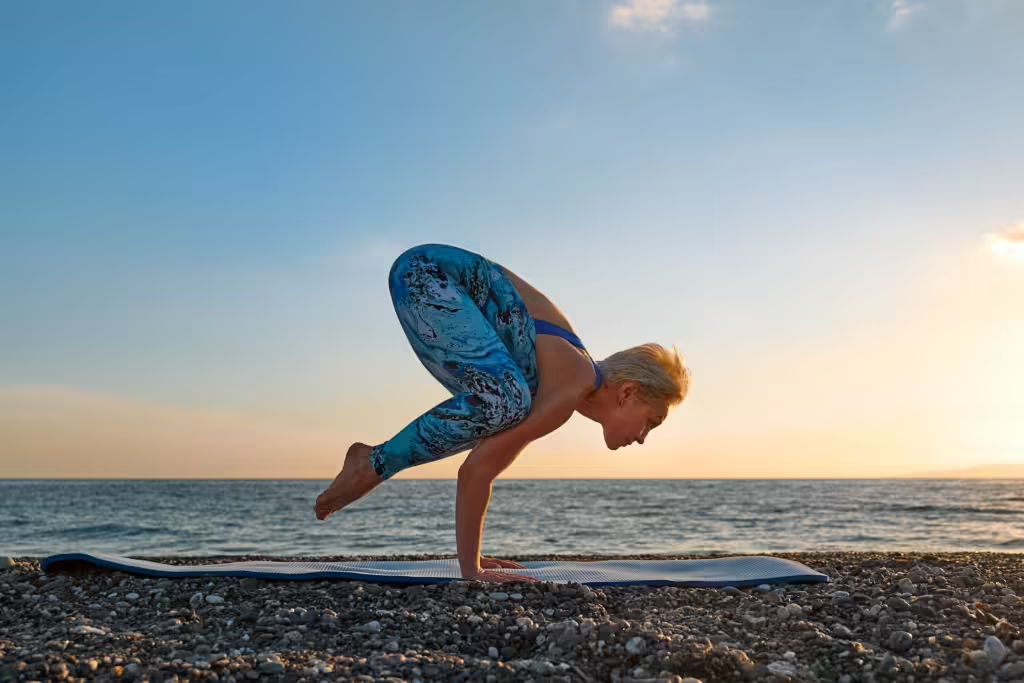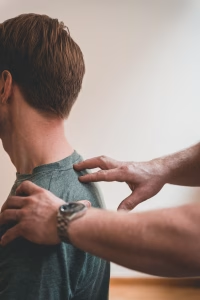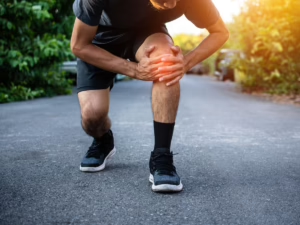Balance is fundamental to movement and health, playing a critical role in maintaining stability, reducing injury risk, and fostering confidence in physical activities. In osteopathic care, balance is more than just physical equilibrium—it’s about integrating the body’s natural systems to support smooth, adaptable movement. This post explores how balance for movement and health is a core part of The Barefoot Osteo philosophy, enhancing overall wellness through a comprehensive, holistic approach to stability.
Recent research highlights how critical balance is for injury prevention, particularly as we age or navigate recovery from physical injuries. Balance doesn’t just keep us upright; it provides mental assurance, allowing us to approach activities with confidence. As the last of our three-part series on Mobility, Stability, and Balance, this blog will explore how balance works alongside these other pillars, forming a complete framework for resilience and wellness.
In this post, we’ll delve into the science of balance, looking at its physical, psychological, and functional components, and discussing how balance training can prevent injuries and improve quality of life. Finally, we’ll examine how The Barefoot Osteo incorporates balance-focused osteopathic treatments, from static to dynamic movements, to support our clients’ ability to move freely and confidently.
Understanding Balance: More Than Just Physical Stability
Balance Defined in Osteopathic Terms
Balance is a multi-dimensional concept, involving physical, psychological, and functional aspects that support our ability to adapt, stabilize, and move with confidence. In osteopathy, we recognize balance as more than maintaining posture or avoiding falls; it’s about a harmonious integration of the body’s systems that allows for resilient and adaptable movement. This expanded view of balance forms a crucial foundation at The Barefoot Osteo and is integral to our holistic approach.
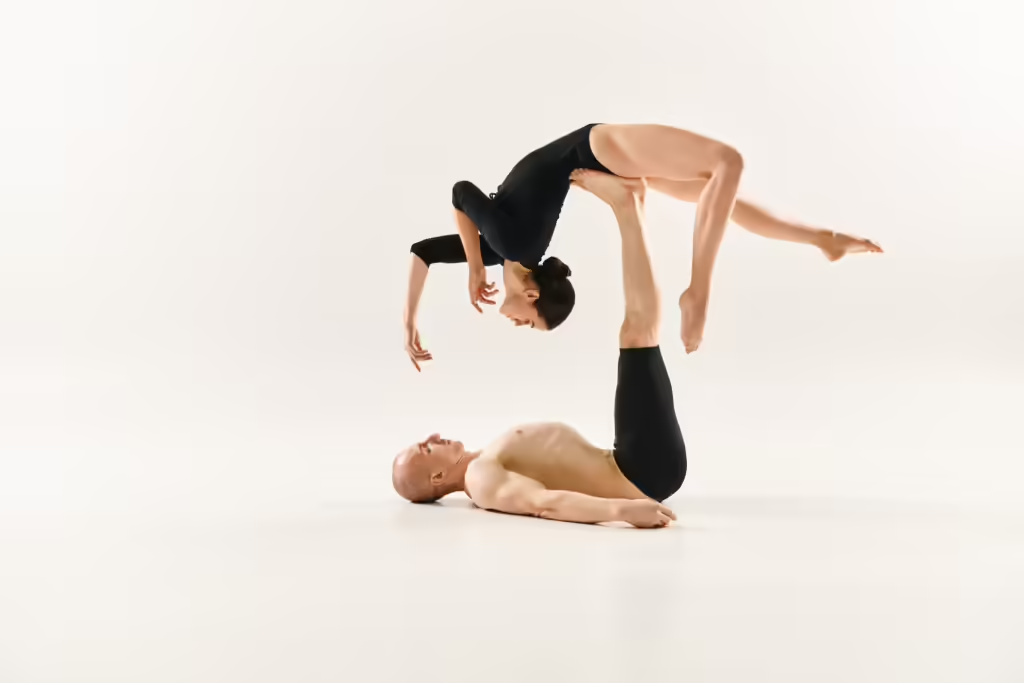
The Physical Dimension of Balance
At a physical level, balance is the body’s ability to maintain its center of gravity over its base of support, whether standing still or in motion. This involves complex interactions between sensory inputs and motor responses that keep us upright and coordinated. Research demonstrates that balance relies on the vestibular system, proprioceptive feedback from muscles and joints, and visual cues. These systems work together to stabilize the body, enabling controlled, safe movement. As discussed in one of our referenced articles, maintaining physical balance is vital for reducing strain on muscles and joints, helping to prevent falls and injuries, especially in physically active populations.
The Psychological Dimension of Balance
Balance also has a profound impact on psychological well-being. When individuals feel physically stable, they tend to experience greater mental confidence and reduced anxiety about movement, which can be particularly beneficial for those recovering from injuries or facing age-related stability issues. This confidence directly influences one’s willingness to remain active, which, as studies show, is essential for maintaining a high quality of life. At The Barefoot Osteo, we work to restore not only physical balance but also this mental assurance, empowering clients to engage in activities without fear of instability.
The Functional Dimension of Balance
Functionally, balance enables us to navigate our environment effectively and safely. It allows for quick adjustments and adaptive responses to unexpected shifts, such as tripping on an uneven surface or carrying a heavy load. This adaptability is especially relevant in osteopathy, as we often work with clients to strengthen their functional balance to meet the specific demands of their lifestyles. By focusing on exercises that enhance functional balance—such as those that challenge dynamic stability—we help clients develop the ability to respond fluidly to physical demands, supporting both mobility and stability.
The Barefoot Osteo’s Approach to Balance
At The Barefoot Osteo, we view balance as an essential part of health and movement. Our approach integrates physical, psychological, and functional elements to support clients in building a balanced foundation for life. We incorporate exercises that improve balance across these dimensions, complemented by osteopathic adjustments to align the body’s structure, ensuring that each movement is supported, fluid, and controlled.
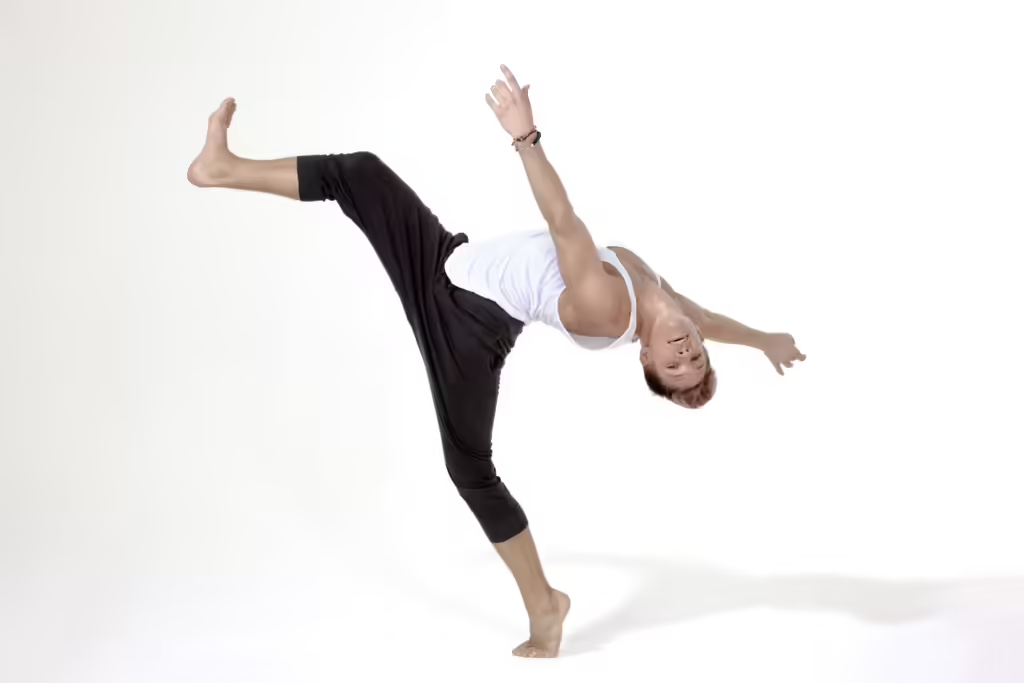
The Role of Balance for Movement and Health
Why Balance Training Matters
Balance training forms a crucial part of balance for movement and health, enhancing physical awareness and reducing injury risks. Unlike exercises that focus solely on strength or flexibility, balance training engages multiple body systems, including proprioceptive, vestibular, and muscular networks, creating a fully integrated movement experience. Research consistently shows that regular balance exercises reduce injury risk, improve body awareness, and help people better manage daily activities that require coordination. For The Barefoot Osteo community, balance training is a core part of our treatment philosophy, as it provides clients with both the confidence and physical control needed for lifelong movement health.
How Balance for Movement and Health Supports Injury Prevention
Balance training significantly reduces the risk of falls, sprains, and other injuries by improving the body’s ability to adapt quickly to changes. For example, studies highlight that people who regularly engage in balance exercises experience fewer injuries because their bodies are better equipped to maintain stability when encountering uneven surfaces or unexpected shifts in movement. Exercises like single-leg stands, balance boards, and Tai Chi all contribute to enhanced proprioception, making it easier for individuals to navigate both predictable and unpredictable environments with confidence. At The Barefoot Osteo, we incorporate these types of exercises to help clients achieve safer, more controlled movement patterns, reinforcing the stability they’ve built and reducing their overall injury risk.
Balance Training for Improved Proprioception and Coordination
Proprioception, the body’s awareness of its own position and movement, is essential for maintaining balance. Balance exercises train proprioceptive feedback loops, strengthening the communication between muscles, joints, and the brain. Improved proprioception is particularly beneficial for those recovering from injuries, as it helps re-establish movement patterns that may have been disrupted. By working on balance, clients regain not only physical control but also a heightened sense of body awareness, which translates to smoother, more confident movements. This connection is vital at The Barefoot Osteo, where we work with clients to restore both stability and proprioceptive feedback, enabling them to move with assurance and agility.
Examples of Effective Balance Training Exercises
Certain exercises are especially effective for enhancing balance and stability. Research supports exercises like single-leg stands, heel-to-toe walks, and dynamic movements that challenge the body’s ability to remain upright under shifting conditions. For instance, Tai Chi has been shown to improve both static and dynamic balance, as well as mental focus. Incorporating these exercises into treatment plans enables clients to build functional strength and adaptability, aligning with The Barefoot Osteo’s holistic approach to movement. Each exercise is selected to suit individual needs, providing tailored solutions that enhance balance and build resilience.
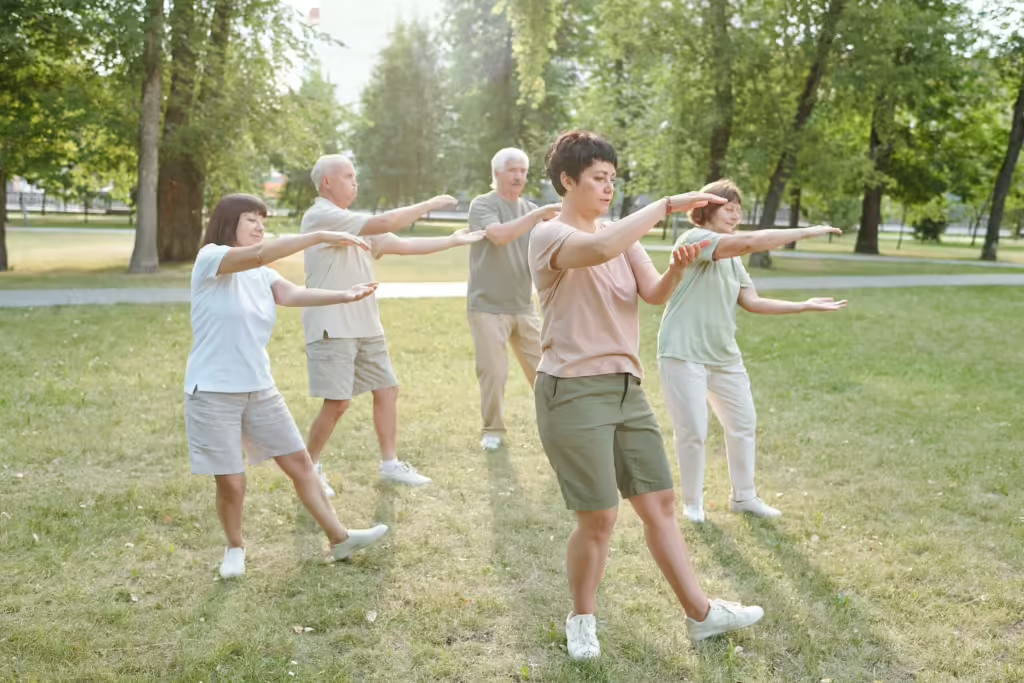
Osteopathic Integration of Balance Training
Balance training works synergistically with osteopathic care, supporting the adjustments and realignments achieved during osteopathic treatments. By reinforcing balance through targeted exercises, clients maintain the benefits of their treatments more effectively, as their body’s alignment supports balanced movement patterns. At The Barefoot Osteo, we view balance training as both a preventive measure and an active treatment component, integrating exercises with osteopathic adjustments to create a stable foundation for lifelong health.
Static vs. Dynamic Balance for Movement and Health
Static Balance: The Foundation of Controlled Posture
Static balance refers to the ability to maintain a stable position without movement, such as standing on one leg or holding a yoga pose. This type of balance is foundational for postural control, supporting activities where stability is required without shifting. Research shows that static balance exercises, like single-leg stands or quiet standing exercises, improve neuromuscular responses and core stability, which are essential for injury prevention and physical alignment. At The Barefoot Osteo, we incorporate static balance exercises to help clients build a baseline of control and postural strength, reinforcing the stability needed for more dynamic activities.
Dynamic Balance: Stability on the Move
Dynamic balance, on the other hand, is the ability to maintain control during movement—such as walking, running, or adjusting quickly to an uneven surface. Unlike static balance, dynamic balance requires the body to respond to shifts in weight and momentum, relying heavily on coordination between the core, legs, and sensory systems. Studies emphasize that dynamic balance training reduces fall risk, especially in older adults, and enhances reaction times in physically active individuals. By challenging the body’s stability in motion, dynamic balance exercises build adaptability and resilience. The Barefoot Osteo integrates dynamic balance exercises into treatments to help clients navigate real-world environments, supporting their ability to react smoothly and safely in a variety of situations.
Benefits of Integrating Both Types of Balance
The most effective balance training incorporates both static and dynamic exercises, creating a well-rounded foundation for movement. Static exercises improve core strength and postural control, while dynamic exercises develop flexibility and coordination in motion. Together, these approaches create a full spectrum of balance, enabling the body to transition smoothly between stable and mobile states. At The Barefoot Osteo, we combine static and dynamic balance work to support clients across all aspects of their physical life, whether they’re managing everyday tasks or engaging in athletic pursuits.

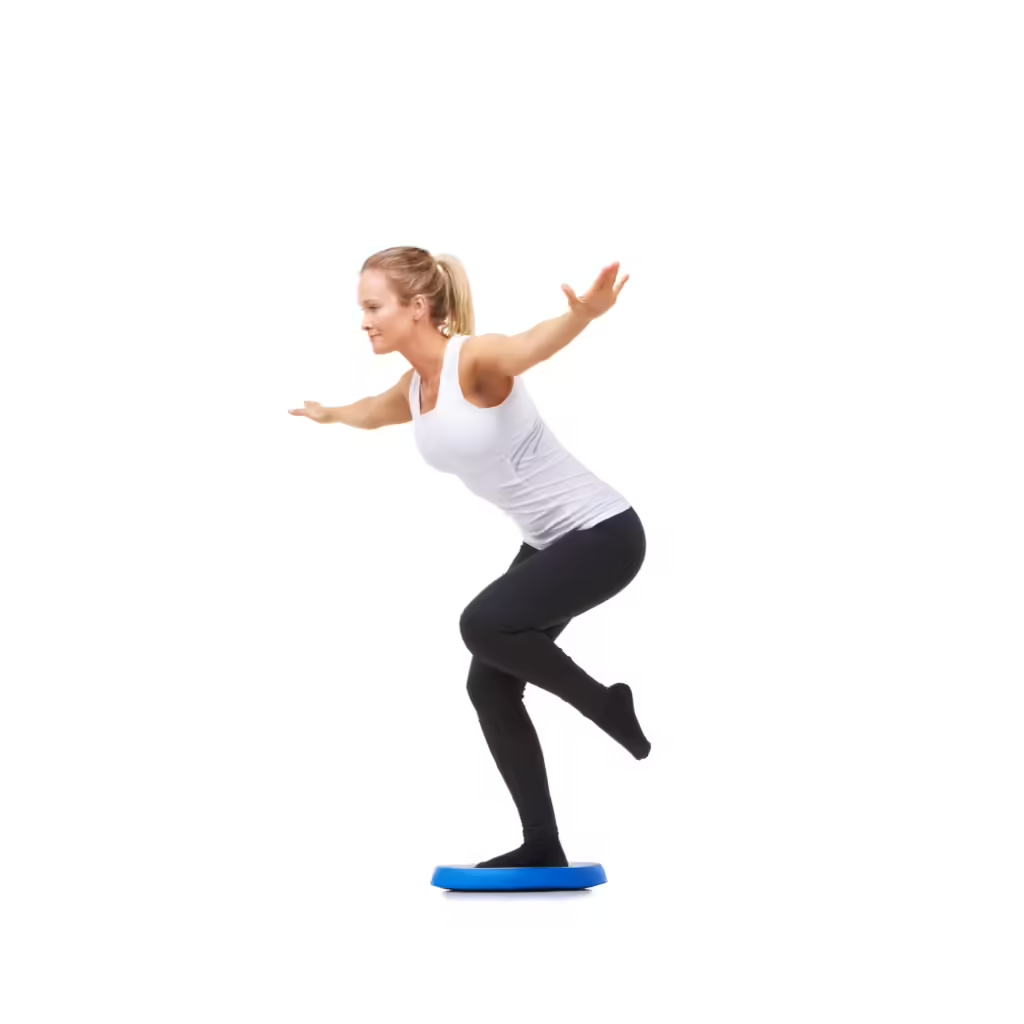
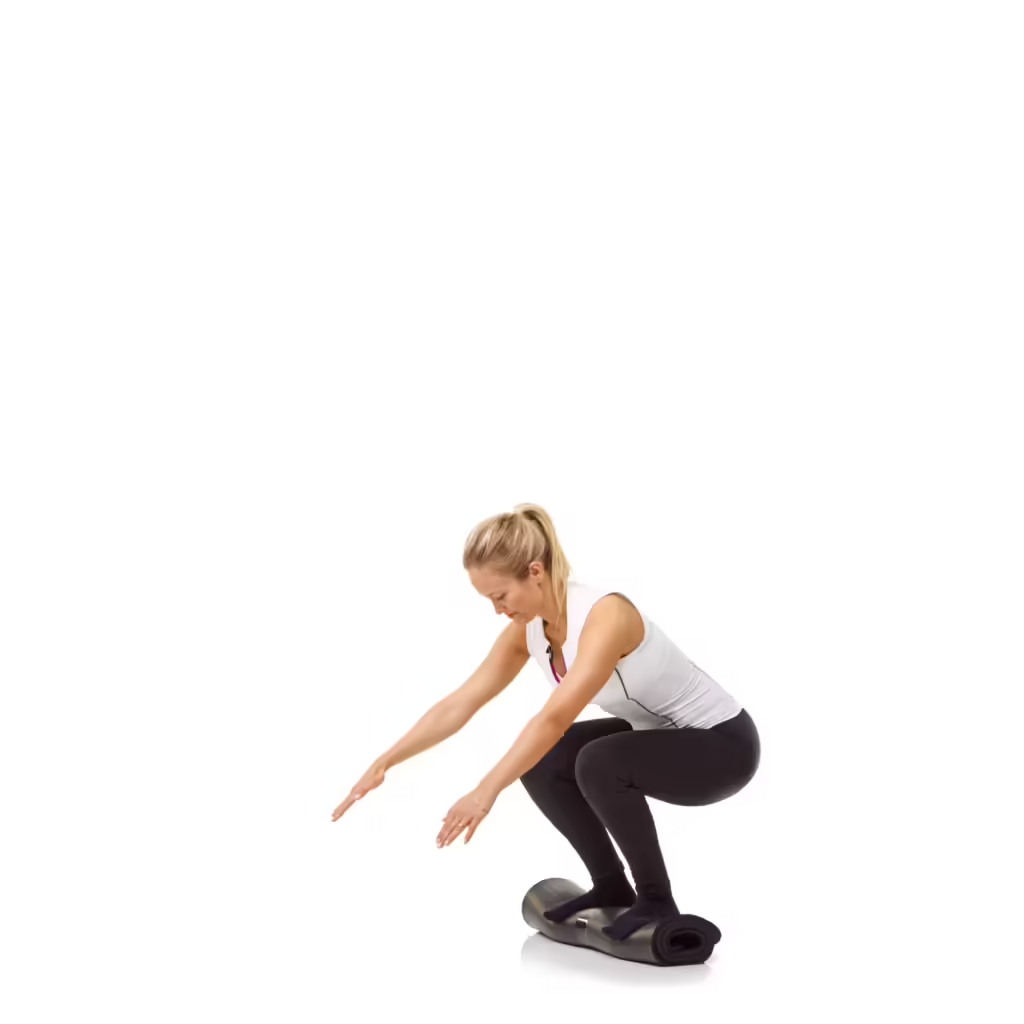
Application of Static and Dynamic Balance at The Barefoot Osteo
Our treatments focus on tailoring balance exercises to meet each client’s unique needs. For clients who struggle with core strength or postural issues, static exercises provide a safe starting point. Meanwhile, those aiming to enhance movement adaptability engage in dynamic exercises, which offer practical benefits for real-life movement challenges. By integrating both static and dynamic balance training, The Barefoot Osteo helps clients gain complete, adaptable stability, allowing them to move confidently and safely through life’s varying demands.
Balance and Aging: Preventing Falls and Supporting Mobility
Why Balance for Movement and Health Matters at Every Age
As we age, natural changes in muscle strength, joint flexibility, and sensory perception can make balance more challenging. Studies show that these age-related changes, combined with slower reaction times, increase the risk of falls—one of the leading causes of injury in older adults. Balance training has been found to counteract these effects by maintaining muscle strength, improving coordination, and enhancing reaction time. For clients at The Barefoot Osteo, we recognize that maintaining balance is key to supporting not only physical health but also independence and confidence in daily life.
Fall Prevention and Quality of Life
For older adults, maintaining balance for movement and health supports independence and reduces the likelihood of falls, enhancing their quality of life. Falls can have serious physical and psychological impacts, often resulting in injuries that reduce mobility and confidence. Research highlights that balance training significantly reduces fall risk, helping older adults maintain the stability they need for daily activities. Incorporating exercises that enhance balance has been shown to improve mobility and lower the chances of fall-related injuries. For clients at The Barefoot Osteo, we prioritize fall prevention by tailoring balance exercises that suit each individual’s physical condition, empowering them to feel more secure and capable in their movements.
Osteopathic Support for Aging and Balance
Osteopathy offers a unique advantage for balance support, particularly for aging clients. By aligning the body’s structure and relieving muscular tension, osteopathic treatments help enhance balance by reducing strain and improving posture. When combined with balance exercises, osteopathy promotes a harmonious relationship between structure and function, making movements smoother and more controlled. At The Barefoot Osteo, our approach integrates these treatments with balance-focused exercises, providing clients with a holistic path to maintaining strength, confidence, and movement independence.
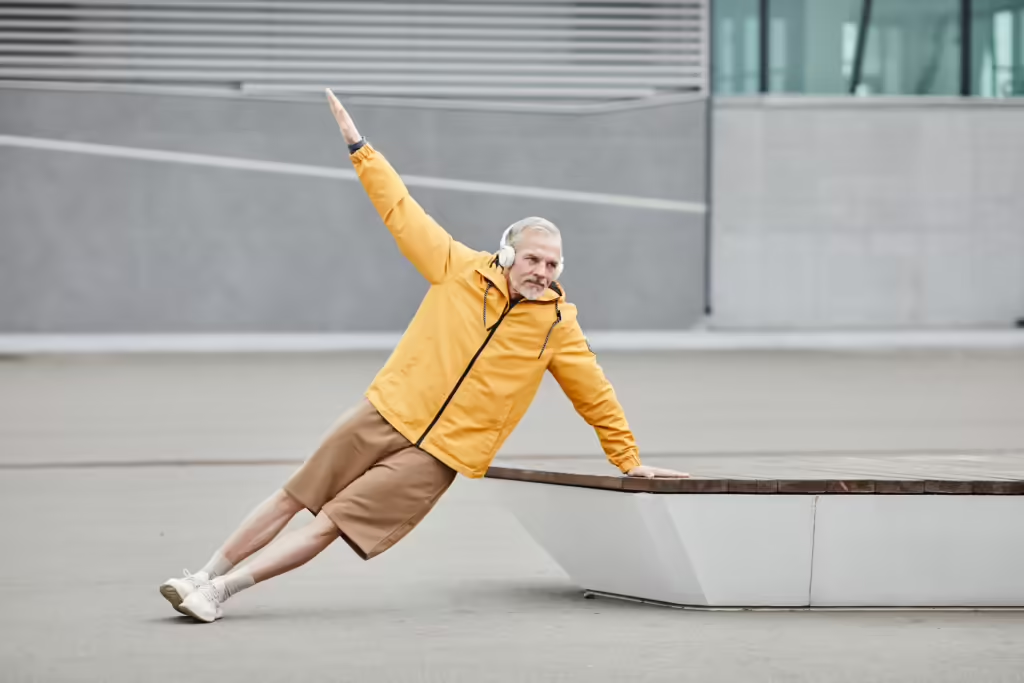
Balance Exercises for Older Adults
Research-backed exercises, such as heel-to-toe walking, chair stands, and stability exercises on uneven surfaces, are especially beneficial for older adults aiming to improve their balance. These exercises not only improve physical balance but also boost reaction times and coordination. The Barefoot Osteo incorporates these balance exercises into treatment plans for aging clients, helping them adapt to changes in their physical abilities and remain active participants in their communities.
Maintaining Independence and Mobility through Balance Training
For many aging individuals, the fear of falling can limit their activity levels, leading to reduced strength, mobility, and social engagement. Balance training helps maintain independence by building confidence in movement, allowing older adults to participate more fully in their lives. By focusing on balance, The Barefoot Osteo enables clients to continue enjoying their favorite activities and routines, providing a strong foundation for overall health and quality of life as they age.
Balance Disorders and Osteopathic Solutions
Understanding Balance Disorders
Balance disorders are conditions that disrupt the body’s ability to maintain stable posture and coordinated movement. Common causes of balance disorders include vestibular issues (related to the inner ear), musculoskeletal imbalances, neurological conditions, and even certain medications. Conditions like vestibular disorders can disrupt balance for movement and health, impacting daily activities and overall stability. Symptoms can range from dizziness and unsteadiness to difficulty with spatial orientation. These disorders can have a profound impact on daily life, leading to a greater risk of falls and reduced confidence in movement. Research highlights the importance of a multidisciplinary approach to treating balance disorders, incorporating sensory, motor, and cognitive aspects to address the issue holistically.
Types of Balance Disorders
- Vestibular Disorders – Affect the inner ear and disrupt the body’s sense of spatial orientation. Conditions like vertigo, Ménière’s disease, and vestibular neuritis often result in dizziness, making it difficult to maintain balance.
- Musculoskeletal Imbalances – Misalignments or muscle weaknesses, particularly in the core or lower limbs, can shift the body’s center of gravity, impacting balance.
- Neurological Conditions – Diseases such as Parkinson’s, multiple sclerosis, or stroke can impair the body’s control over movement and posture, leading to a loss of balance.
These conditions require specialized care to restore balance, coordination, and stability. At The Barefoot Osteo, we assess each client’s unique condition, using osteopathic principles to address the structural and functional imbalances that contribute to their symptoms.
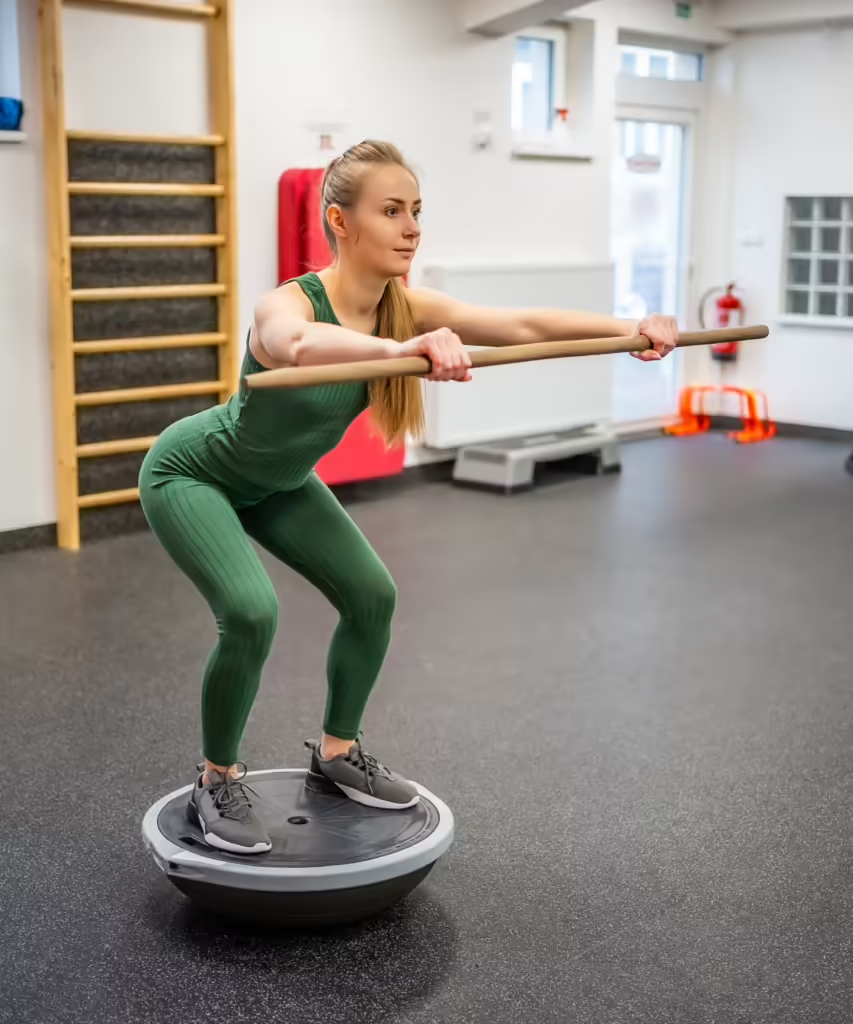
Balance for Movement and Health in Osteopathic Treatment Plans
Osteopathy provides a comprehensive approach to treating balance disorders, focusing on alignment, muscle function, and proprioceptive feedback. Osteopathic adjustments and manual techniques help restore the body’s alignment, making it easier for clients to maintain balance. In addition, soft tissue techniques relieve muscular tension, which can improve movement fluidity and stability. By enhancing proprioception—the body’s awareness of its position in space—osteopathic treatments strengthen the body’s natural ability to stabilize itself.
At The Barefoot Osteo, we employ a combination of these osteopathic techniques tailored to each client’s needs, addressing both the structural and sensory components of balance disorders.
Proprioceptive Training and Balance Restoration
For clients with balance disorders, retraining the body’s proprioceptive abilities is crucial. Research underscores the value of proprioceptive exercises for improving balance in individuals with vestibular or neurological issues. Exercises like single-leg stands on an unstable surface, balance beam walks, or gentle dynamic movements help retrain the body’s response to positional changes, restoring confidence in movement. At The Barefoot Osteo, we incorporate these exercises into our balance disorder treatment plans, ensuring that each client has a practical and supportive path to improved stability.
Building Confidence and Quality of Life
Balance disorders can significantly impact quality of life, limiting an individual’s ability to engage in everyday activities or exercise without fear of falling. Addressing balance from both physical and psychological perspectives, The Barefoot Osteo helps clients regain confidence and reduce their reliance on adaptive strategies, like holding onto furniture or limiting movement. By treating both the structural and functional aspects of balance, we support clients in regaining the freedom to move confidently and independently.
The Psychological Benefits of Balance
The Mind-Body Connection in Balance
Balance extends beyond physical control; it significantly influences mental and emotional resilience. Research has shown that people with strong balance tend to experience greater self-confidence in their physical abilities, which directly impacts their mental outlook. When balance is stable, individuals feel more grounded and assured in their movements, reducing anxiety about potential falls or injuries. This mind-body connection is central to The Barefoot Osteo philosophy, where we recognize that physical stability nurtures psychological well-being.
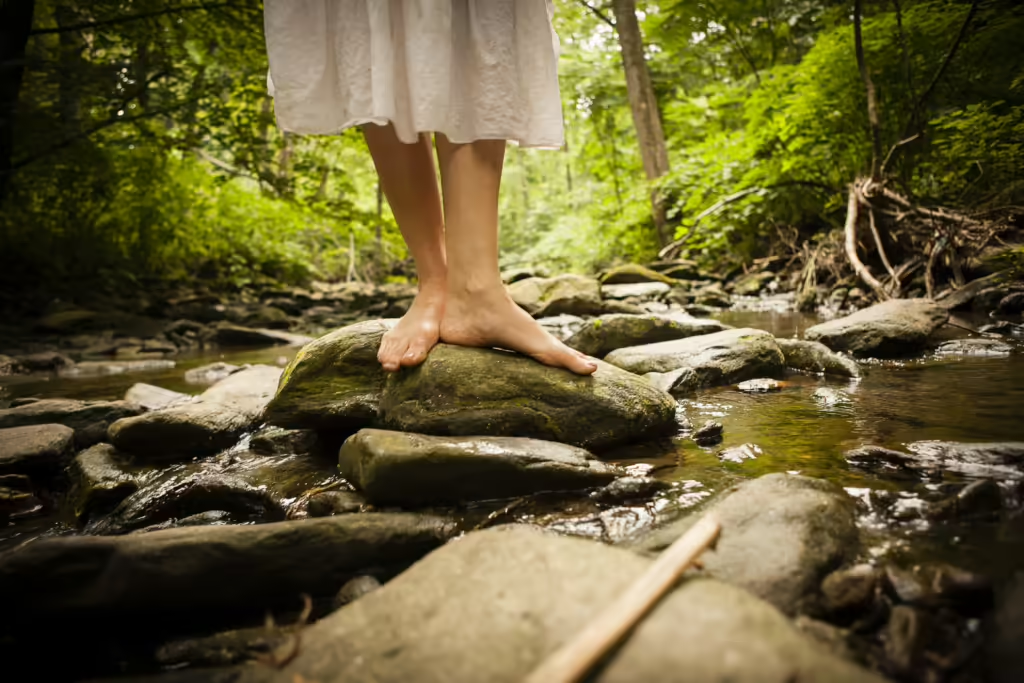
Confidence and Independence through Balance
For many individuals, especially those recovering from an injury or facing age-related changes, fear of falling can limit their willingness to engage in physical activities. This can create a cycle of reduced activity, which further diminishes physical strength and balance. Studies indicate that balance training helps break this cycle by empowering people to regain confidence in their movement abilities. By working on balance, individuals not only restore physical control but also build mental resilience. At The Barefoot Osteo, we integrate balance training into our treatments to help clients rebuild their sense of independence and self-assurance.
Reducing Anxiety and Improving Quality of Life
Balance also has a role in managing anxiety. Individuals with compromised balance often feel uncertain about their stability, which can lead to increased stress, especially in public or unfamiliar settings. Research supports the idea that improved balance reduces this anxiety by fostering a sense of control over one’s movements. For clients at The Barefoot Osteo, we see firsthand how balance exercises improve not only their physical capabilities but also their comfort in social or physically demanding environments, contributing to an overall improvement in quality of life.
Balance Training as a Tool for Mental Resilience
Balance training has benefits beyond physical movement; it challenges focus, patience, and adaptability, which are essential traits for mental resilience. Exercises that require concentration, like single-leg stands or Tai Chi, encourage individuals to be present in the moment, fostering mindfulness. This mindful approach to balance training helps clients feel more connected to their bodies, supporting both mental clarity and emotional well-being. The Barefoot Osteo incorporates these mindful balance practices to create a holistic treatment experience, helping clients cultivate a stable foundation for both body and mind.
Building Long-Term Mental and Physical Strength
By improving balance, clients gain not only physical stability but also a long-term sense of mental strength and self-confidence. Balance training teaches adaptability, helping clients face the challenges of aging, recovery, or daily physical demands with a greater sense of control and optimism. This approach aligns with The Barefoot Osteo’s mission to support clients’ well-being in every aspect, fostering a sense of empowerment that transcends physical boundaries.
Conclusion: Integrating Balance, Stability, and Mobility at The Barefoot Osteo
Balance is far more than simply standing steady—it is a cornerstone of holistic movement health that supports everything from daily activities to athletic performance. By nurturing balance, we empower ourselves to move confidently, reduce injury risk, and maintain resilience against the changes that come with aging. Balance works in harmony with stability and mobility, forming an integrated framework that allows us to live actively, adapt fluidly, and engage fully with the world around us.
At The Barefoot Osteo, we recognize that balance, like stability and mobility, plays a pivotal role in overall wellness. Whether through targeted exercises, osteopathic treatments, or mindful movement practices, our approach is designed to support clients in achieving a strong, adaptable, and confident foundation for movement. As the final piece in our series on Mobility, Stability, and Balance, this blog emphasizes how balance enhances every movement we make, providing a grounded base that allows us to truly enjoy an active, fulfilling life.
Ready to strengthen your balance for movement and health? Reach out to The Barefoot Osteo today to learn more about our holistic approach to balance and movement health. Let’s work together to build a balanced, resilient body that supports you in everything you do—so you can move confidently and embrace life’s adventures.
References:
DiStefano, L. J., Clark, M. A., & Padua, D. A. (2009). Evidence supporting balance training in healthy individuals: A systematic review. Journal of Strength and Conditioning Research, 23(9), 2718–2731.
Eng, J. J., Pang, M. Y. C., & Ashe, M. C. (2008). Balance, falls, and bone health: Role of exercise in reducing fracture risk after stroke. Journal of Rehabilitation Research & Development, 45(2), 297–314.
Garrido, J. E., Marset, I., Penichet, V. M. R., & Lozano, M. D. (2013). Balance disorder rehabilitation through movement interaction. PervasiveHealth 2013, 252368.
Guan, H., Zhou, Z., Li, X., Pan, Y., Zou, Z., Meng, X., … & Xiu, M. (2023). Dance/movement therapy for improving balance ability and bone mineral density in long-term patients with schizophrenia: A randomized controlled trial. Schizophrenia, 9, 47.
Herdman, S. J., Schubert, M. C., & Tusa, R. J. (2001). Strategies for balance rehabilitation. Annals of the New York Academy of Sciences, 942(1), 394-406.
Hill, J. O., Wyatt, H. R., & Peters, J. C. (2013). The importance of energy balance. European Endocrinology, 9(2), 111–115.
Konrad, H. R., Girardi, M., & Helfert, R. (1999). Balance and aging. The Laryngoscope, 109(9), 1464-1470.
Lipworth, W. L., Hooker, C., & Carter, S. M. (2011). Balance, balancing, and health. Qualitative Health Research, 21(5), 714-725.
O’Malley, M. A. (2024). The concept of balance in microbiome research. BioEssays, 46, Article 2400050.
Page, P. (2006). Sensorimotor training: A “global” approach for balance training. Journal of Bodywork and Movement Therapies, 10(1), 77-84.
Pollock, A. S., Durward, B. R., Rowe, P. J., & Paul, J. P. (2000). What is balance? Clinical Rehabilitation, 14(4), 402–406.
Ragnarsdottir, M. (1996). The concept of balance. Physiotherapy, 82(6), 368-372.
Winter, D. A., Patla, A. E., & Frank, J. S. (1990). Assessment of balance control in humans. Medical progress through technology, 16(1-2), 31–51.
Zech, A., Hubscher, M., Vogt, L., Banzer, W., Hansel, F., & Pfeifer, K. (2010). Balance training for neuromuscular control and performance enhancement: A systematic review. Journal of Athletic Training, 45(4), 392–403.

